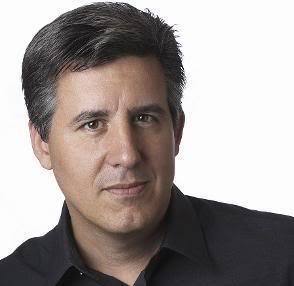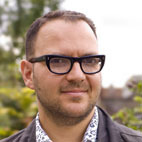Stewart Brand's Blog, page 86
July 19, 2012
Elaine Pagels Seminar Tickets
Seminars About Long-term Thinking

Elaine Pagels on “The Truth About the Book of Revelations”
TICKETS
Monday August 20, 02012 at 7:30pm Cowell Theater at Fort Mason
Long Now Members can reserve 2 seats, join today! • General Tickets $10
About this Seminar:
Revelations about the Book of Revelation
Probably the most consequential vision of the future ever written is the Bible’s Book of Revelation. If God didn’t write it (through the sainted instrument of someone named John), then who did, and why?
Elaine Pagels has a persuasive answer, spectacularly illustrated. The author of The Gnostic Gospels; Beyond Belief; and Revelations: Visions, Prophecy, and Politics in the Book of Revelation, Pagels analyzes other revelations of the time (they were common) and examines how John’s particular version of apocalypse made it into the world’s most popular book. John had his own agenda. It wasn’t Christian.

July 17, 2012
Daniel Suarez, Alexander Rose on Drones and Robots

Like their makers, robots can be used for creativity or destruction. Robots can be used to build things we wouldn’t expect and to destroy us in ways we haven’t yet imagined. In two events, Daniel Suarez and Alexander Rose discuss this dynamic potential and some of the things they’ve learned through hands-on and speculative work with robots and drones.
Daniel Suarez reading at Long Now 7/23/12
Long Now Members can RSVP via Eventbrite; please see your email for the access code.
Suarez will be reading and discussing his new book, Kill Decision, at The Long Now Museum on Monday July 23rd, at 6:30pm; refreshments will be served and books will be for sale.
about the book:
…a terrific mix of thrills and mayhem, big ideas, and well-founded technological and social speculation. This is the kind of mind-expanding novel that uses entertainment to make powerful, important points about alarming current trends; the novel as cautionary tale has rarely been better executed. – Tim O’Reilly
Dorkbot with Alexander Rose and Daniel Suarez on 7/25/12
No pre-sale tickets, $5 to $20 sliding scale at the door, open to the public
*Please note that this event may reach capacity
This Dorkbot is at Jellyfish Gallery on Wednesday July 25th at 7:30pm. DorkbotSF is about people doing strange things with electricity and is run by Long Now member Karen Marcelo.
Daniel Suarez will be talking about Crossing the Rubicon: Autonomous Combat Drones — what’s driving their development and their likely impact on human society.
Long Now Executive Director Alexander Rose will discuss the technology and methodology of construction now underway on the 10,000-Year Clock.
More about the speakers:
Long Now Seminar Speaker, Daniel Suarez is an independent systems consultant who designed and developed enterprise software for the defense, finance, and entertainment industries. He then turned to writing to explore his ideas about our near-term future in his books Daemon, Freedom (TM), and now Kill Decision.
Hired as the first employee of The Long Now Foundation in February of 01997, Alexander Rose is the Executive Director of the Foundation and the Project Manager for the 10,000-Year Clock. Alexander graduated with a bachelor of arts honors degree from Carnegie Mellon University in Industrial Design in 01995 and shares several design patents on the 10,000-Year Clock with Danny Hillis.
More about Kill Decision:
From the New York Times Bestselling author of Daemon and Freedom™, comes a terrifying, breathtaking, and all-too-possible vision of the world’s near future. In his new novel, Kill Decision, Daniel Suarez turns to the timely and increasingly important topic of combat drones. The book tells the story of myrmecologist Linda McKinney—a scientist studying weaver ants—who is forced to team up with a Special Ops soldier after her research is stolen and used by unknown forces to power autonomous swarming weapons. Suarez’s well researched thrillers are based on real science and technology, and in Kill Decision he takes the very real implications of automated war to its next logical step.”

July 16, 2012
Revive and Restore
Stewart Brand and Ryan Phelan discuss the Revive and Restore project with Walter Isaacson at the 02012 Aspen Environment Forum
A new initiative within The Long Now Foundation has the goal of “deep ecological enrichment through extinct species revival.” Named Revive and Restore,” the project is co-directed by Stewart Brand, co-founder and President of The Long Now Foundation, and Ryan Phelan, former CEO of DNA Direct. Revive and Restore is convening a series of meetings of de-extinction pioneers from all over the world, bringing together revivers of particular species (Woolly mammoth, European aurochs, Pryrenean ibex, and others), practitioners of various techniques (such as cloning, homologous recombination, and back-breeding), along with ancient-DNA specialists, ecologists, conservation biologists, and bioethicists. Revive and Restore is focussing its own de-extinction efforts on the passenger pigeon (extinct 1914), working with the genome of its closest living relative, the band-tailed pigeon.
The first public glimpses into the project came in the interview with Stewart by NPR’s Neal Conan for “Talk of the Nation” on June 25 and the conversation between Stewart Brand, Ryan Phelan and Walter Isaacson at the 02012 Aspen Environment Forum.
Stewart Brand discusses the Revive and Restore project with Neal Conan

July 12, 2012
What could take the internet down?
In April 02010, Dr. David Eagleman addressed the Seminars About Long-term Thinking with a lecture called “Six Steps to Avert the Collapse of Civilization.”
Central to Dr. Eagleman’s proposal for a resilient global society was the internet. As a high-volume, distributed communication system, the net offers new ways to contain disease, back-up information, share knowledge, work around oppressive regimes, collaborate, and save energy. Together, he argued, these features make the internet one of humanity’s best inventions and one of our best bets against the things that toppled previous civilizations.
It’s not, however, a perfect system. Dr. Eagleman recently outlined some of the vulnerabilities we’ll want to patch if the internet is really going to be our civilization’s failsafe. Solar flares make an appearance; here’s a great feature on them from a recent issue of National Geographic. Read the rest at CNN.

July 11, 2012
Minitel Signs Off For Good
In the early 01980s, French farmers were already checking stock prices online. High school students found out exam scores, families reserved train tickets, and young women purchased clothing – all through a nationwide communications network called Minitel.
First pioneered in Brittany during the late 01970s, the PTT (France’s national telecommunications provider) launched the network nationwide in 01982. Minitel was a videotex service: an interactive network run through the telephone lines, that offered a variety of services when prompted by user input. A few keystrokes on a Minitel terminal provided access to your bank account; a few others opened a telephone directory; an “online” mailbox; or a hotel reservation system.
Small, grey, boxy terminals were distributed free of charge to millions of subscribers and before long, households all over France were connected to the network.
It was an innovative, avant garde technology in its time. The BBC writes:
As President Jacques Chirac boasted: “Today a baker in Aubervilliers knows perfectly how to check his bank account on the Minitel. Can the same be said of the baker in New York?” Chirac was speaking in 1997, exactly half way through the life-cycle of France’s greatest telecoms innovation. At the time, he could be forgiven for thinking it would last forever. This was the high point, with nine million Minitel sets installed in households around the country, an estimated 25 million users, and 26,000 services on offer.
But last forever it would not: after 30 years of service, Minitel signed off for good on June 30th. Now that most people turn to the Internet for their connection to social networks, information services, and consumerism, the network has become obsolete and too costly to maintain.
Several media outlets suggest that Minitel was doomed for failure. At the height of the network’s growth, the World Wide Web was already growing into a formidable competitor. And as an open platform, the Internet allowed for more creativity and free development than the highly regulated Minitel. Though innovative and useful in its time, the network simply had not been built to evolve or adapt. Ars Technica quotes Jérémie Zimmerman, head of the French digital rights group La Quadrature du Net:
The Minitel was innovative for about 20 minutes, and died due to where it failed: by its centralization that never allowed it to evolve technologically: because it was under the control of France Telecom, for whom that control translated into huge profits. It is true that the Minitel taught French people how to use a keyboard and how to connect to online services. But it taught them the opposite of what is the most important lesson about the internet: its universality, and the decentralized character of its architecture.
Others, though, feel that the Minitel should not be dismissed or forgotten as an obsolete form of technology. The BBC quotes Valerie Schafer, co-author of a recently published book about Minitel:
People forget that many of the ideas that helped form the internet were first of all tried out on Minitel. Think of the payment system, not so different from the Apple app-store. Think of the forums, the user-generated content. Many of today’s web entrepreneurs and thinkers cut their teeth on Minitel.
Obsolete and doomed, or innovative and generative, Minitel reminds us not only that technology is forever evolving, but also that every life-altering technological advancement is born of something. Minitel helped shape the Internet as we know it today – just as the Internet will help shape our communications networks of the future.

July 10, 2012
In the long run, we’re all dead.
There’s a whole booming world of research in the field of behavioral economics that is trying to use psychology and brain science to better understand how people make value judgements and decisions. Researchers working in this field have found that including time as a variable in their studies can often lead to surprising results. In the jargon of the field, it’s called dynamic inconsistency and perhaps the most widely-known example is temporal discounting - the tendency to value future rewards less than present or near-future ones.
One recent study, described in Scientific American, sought to explore factors that might change how people would divvy up rewards between themselves and future generations. Participants were asked to imagine themselves to be CEOs of an energy firm that had recently discovered a new, cheap fuel-source. In this role, it was their job to decide how to make use of this limited resource over a timespan of multiple generations – how much to use now and how much to save for those of the future.
For the variable, some of the study participants were given an article to read beforehand that told the story of a fatal airplane crash. The idea was that they were being primed to imagine their own mortality, and the results showed that those who had read the article tended to save more energy for future use, leading the researchers to conclude that there may be something about being aware of one’s own death that triggers a stronger affiliation with future generations.

July 5, 2012
A Half-Century History of Nuclear Waste
When thinking of problems that demand long-term solutions, nuclear waste management comes to mind rather quickly. With half-lives ranging from 30 to 24,000, or even 16 million years (Strontium-90, Plutonium-239, and Iodine-129 respectively), the radioactive elements in nuclear waste defy our typical operating time frames. The question of how best to deal with that waste has been a matter of intense debate since the 01950s when the first electricity-generating nuclear reactors were built.
The history of that debate, which centers around Yucca Mountain, New Mexico’s Waste Isolation Pilot Plant and Washington, DC, involves a lot more than just long-term science and engineering and it is the subject of an in-depth, well-researched piece of investigative journalism entitled “Wasteland,” by Matt Stroud for The Verge. (They also produced a short accompanying video about the Waste Isolation Pilot Plant.)
Stroud chronicles how the storage solutions recommended by a 01957 NAS study went largely unheeded until the Three Mile Island meltdown twenty-two years later. The accident pushed the issue onto the public stage, setting in motion a process of political battling, scientific (and unscientific) study, and technological research that continues today.
Though every presidential administration since Eisenhower’s has touted nuclear power as integral to energy policy (and decreased reliance on foreign oil), none has resolved the nuclear waste problem. The impasse has not only allowed tens of thousands of tons of radioactive waste to languish in blocks of concrete behind chain link fences near major cities. It has contributed to a declining nuclear industry, as California, Wisconsin, West Virginia, Oregon, and other states have imposed moratoriums against new power plants until a waste repository exists. Disasters at Fukushima, Chernobyl, and Three Mile Island have made it very difficult, expensive, and time-consuming to build a nuclear reactor because of insurance premiums and strict regulations, and the nuclear waste stalemate has added significantly to the difficulties and expenses. Only two new nuclear power plants have received licenses to operate in the last 30 years.
Despite the short-term considerations that have hampered efforts to develop a nuclear waste management system, few of the groups involved in the debate fail to recognize the long-term nature of the problem. Stroud directly addresses this aspect of the issue, discussing some of the ways in which different actors have grappled with it. (Finland’s Onkalo nuclear storage facility, for example, is designed for 100,000 years.)
10,000 vs. 1 million years
With nuclear waste storage, time is always a factor. How long must a waste storage facility remain impenetrable to avoid harming humans well into the future?
In the 1990s, the U.S. Environmental Protection Agency said 10,000 years. This decision was based in part on predicted frequencies of ice ages but it was essentially a guess. Later, that standard was increased to a million years by the U.S. Court of Appeals in part due to the long half lives of certain radioactive isotopes and in part due to a significantly less conservative guess.
The increase in time from 10,000 years to 1 million years made the volcanic cones at Yucca look less stable and million-year-old salt deposits — like those found in New Mexico — more applicable to the nuclear waste problem.
DOE hired anthropologists to study the history of language—both at Yucca and at the WIPP site in New Mexico—to conceive of a way to communicate far into the future that waste buried underground was not to be disturbed.
But the Blue Ribbon Commission’s report earlier this year calls these abstract time periods a little impractical.
“Many individuals have told [BRC] that it is unrealistic to have a very long (e.g., million-year) requirement,” it reads. “[BRC] agrees.
It then points out that other countries “have opted for shorter timeframes (a few thousand to 100,000 years), some have developed different kinds of criteria for different timeframes, and some have avoided the use of a hard ‘cut-off’ altogether.” The conclusion? “In doing so, [these countries] acknowledge the fact that uncertainties in predicting geologic processes, and therefore the behavior of the waste in the repository, increase with time.”
If 10,000 years might not be long enough for the designed longevity of a waste storage facility, it’s interesting to note how other aspects of the nuclear industry are still viewed in a relatively short-term framework. The article cites four reasons for the controversy surrounding spent fuel reprocessing, and one of them is that “uranium remains abundant, meaning there’s little need for reprocessing. Estimates from nuclear wonks worldwide generally agree that if the world’s needs quadrupled today, uranium wouldn’t run out for another 80 years.”

July 3, 2012
Bringing the World’s ~ 7,000 Languages Online

On July 9, Rosetta Project director Laura Welcher will be giving a talk in the Long Now museum on “Bringing the World’s ~ 7,000 Languages Online.” This talk is part of an ongoing series offered by SF Globalization, a San Francisco meetup group interested in software localization and internationalization.
“There are nearly 7,000 languages spoken in the world today, but the vast majority of them are contracting dramatically in use, rapidly approaching obsolescence and extinction. While computers, mobile devices and the Internet could offer an entirely new domain of language use – infusing these languages with modern vitality and vigor – there are few languages that can be used with ease in this domain today. In this talk, Dr. Laura Welcher will present the work of The Rosetta Project that she directs at The Long Now Foundation, their efforts to build resources and capacity for all human languages, and what it takes to bring these languages online.”
Find all the details and RSVP to attend on the Meetup Page.

July 2, 2012
Cory Doctorow Seminar Primer
Tuesday July 31, 02012 at the Novellus Theater, San Francisco
If geek culture had a class president, Cory Doctorow would be frontrunner for the position. He writes for BoingBoing, uses Ubuntu, played a hero in XKCD, published several rebellious young-adult sci-fi novels (under CC licenses, no less), and has worked on two continents fighting for the rights of internet users. He’s spent the better part of the last couple decades encouraging content-producers to embrace the new models of distribution made possible by the internet and fought them tooth and nail when they seek to hold it back.
His outspokenness doesn’t come from a single statement like “information wants to be free.” Doctorow argues in a recent essay called Lockdown that enforcing Copyright law in the digital era is about more than protecting the rights of intellectual property holders; it has rather become a kind of trojan horse for the surveillance industrial complex and threatens to severely curtail the individual autonomy of the world’s citizens. Computers are infusing everything, he explains. They increasingly extend our embodiment and cognition and can thus be enabling and liberating. Computing’s inherent flexibility therefore offers a form of freedom; commercial or governmental interests that seek to control computing for their own needs or simply out of a fear of the new way must be resisted in order to protect that freedom.
The hacker resistance is a central theme in Doctorow’s fiction. Little Brother and its upcoming sequel, Homeland, focus on teenagers in a near-future world who, as savvy tech users, confront the increasingly intrusive surveillance of a paranoid government. For the Win explores what the world of online gaming can offer to the understanding of resistance movement recruiting and organization. He also recently collaborated with Charles Stross on a book called The Rapture of the Nerds, comically and satirically exploring the idea of the technological singularity.
Cory Doctorow lucidly and pragmatically voices geek culture’s highest hopes and biggest fears. In a recent column in The Guardian or this interview with Technology and Activism, for instance, he describes both the need to organize against those who would curtail digital rights and the increasing ease with which it can be done through web technology. His work supports the need for a critical and activist approach to technological development, symbolically and creatively through his fiction, but also substantively and measurably through his scholarship, his journalism, and his work with the Electronic Frontier Foundation.
Cory Doctorow describes the threats our technological rights will face – and how we can protect them – on July 31st at the Novellus Theater. You can reserve tickets, get directions, and sign up for the podcast on the Seminar page.
Subscribe to the Seminars About Long-term Thinking podcast for more thought-provoking programs.

June 28, 2012
Evernote and the 100-year data guarantee
There are many many businesses that will store your data online for you, but few that actively address the problems of the digital dark age. While many people fear that incriminating or unflattering photos will live online forever, the opposite problem also lurks – your crucial or sentimentally valuable data can disappear when servers crash, products are discontinued, or companies go out of business.
Evernote is a service that saves users’ text, photos, website URLs, and other data. For anyone relying on the service to archive important information, access is vital. And for someone who’s spent years creating an ‘external brain’ with Evernote, some kind of long-term guarantee might function like a helmet, promising a bit of cushion in case of some sudden shock to the system.
Citing Long Now’s long-term focus as an inspiration, Evernote CEO Phil Libin announced at the recent Le Web London conference that the company will soon set up a protected fund and include a legally binding guaratee that users’ data will be maintained for 100 years, even if the company itself is bought or ceases to be.
It will be a very long time before anyone can determine the success of this effort, but it is an encouraging attempt at substantively grappling with the long-term.

Stewart Brand's Blog
- Stewart Brand's profile
- 291 followers











